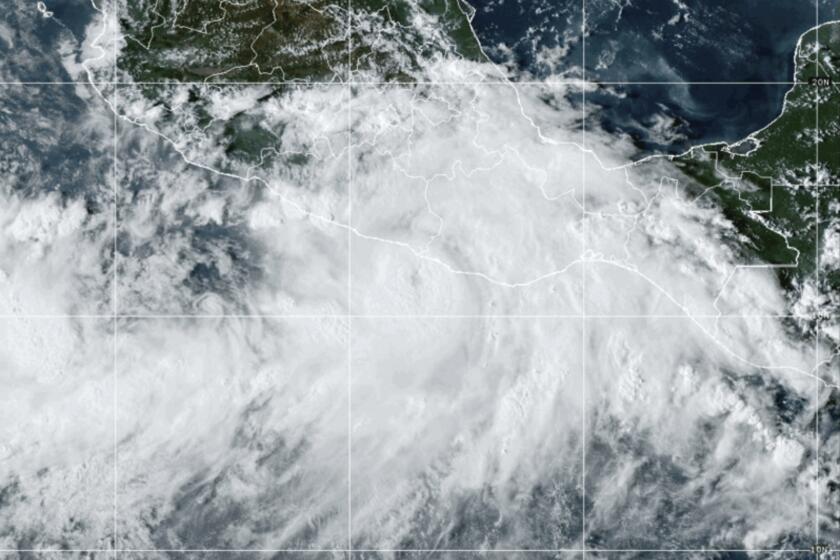Federal Officials Echoed Grazing-Rule Warnings
Federal wildlife managers across the West warned the U.S. Bureau of Land Management that new livestock grazing regulations were potentially harmful to wildlife and water quality, adding their voices to those of BLM scientists who said similar criticism was excised by Washington policymakers.
Wildlife experts for the Fish and Wildlife Service’s three Western regions, along with Environmental Protection Agency officials, expressed concerns in written comments to the BLM last year. The bureau solicited the comments as it was finalizing the new grazing rules, which go into effect this month.
“The proposed revisions would change fundamentally the way the BLM lands are managed, temporally, spatially, and philosophically,” stated a 16-page Fish and Wildlife Service report. “These changes could have profound impacts on wildlife resources.”
Grazing regulations affect more than 161 million acres of public land in the West, including 8 million acres in California. The rules define how ranchers may use the land and guide federal land managers in determining how many cattle may graze, where, and for how long without harming natural resources.
The comments by the Fish and Wildlife Service on the grazing regulations were approved by the service’s three Western regional directors and sent to the bureau in Washington as a draft. According to Fish and Wildlife spokesman Chris Tollefson, the agency requested to meet with BLM officials before finalizing their comments. Tollefson said the bureau never agreed to meet and did not respond to the written comments.
“I don’t know that they did or did not ignore them,” Tollefson said. “We felt that we did what we could to let them know our concerns. We identified concerns with the policy, and that hasn’t changed.”
A BLM spokesman in Washington, Tom Gorey, said that because the Fish and Wildlife Service’s comments were in draft form, they did not represent the agency’s official position.
“Where is the official Fish and Wildlife position?” he asked. “We’ve never seen it.”
Steve Williams, who was director of the Fish and Wildlife Service when the agency prepared its comments, said his agency followed protocol.
“That whole process is in place for a reason,” Williams said. “The fact that the process didn’t follow through, and the comments of the service and other agencies weren’t able to be incorporated, that does bother me. We take the time to put the comments together.”
The EPA’s comments focused on water quality and aquatic habitats. The agency concluded that the new grazing policy appeared to “reduce the flexibility” to act against “degradation of water quality or rangeland” and could delay urgent intervention in such degradation.
BLM scientists reached many of the same conclusions, but their written comments were changed by agency officials in Washington last year. The original environmental analysis warned that the new rules would have a “significant adverse impact” on wildlife, but the scientists’ language was altered to read that the grazing regulations were “beneficial to wildlife.”
Bureau biologist Erick Campbell, who wrote the wildlife sections of the original BLM analysis, called the final product “a whitewash.”
Bureau officials said editing and review were standard. Further, they said the new grazing rules changed existing policy relatively slightly and said the regulations more fairly balanced the needs of plants, wildlife, water and other resources with the rights of ranchers to use public land.
The new rules reverse long-standing policy giving bureau experts the authority to quickly determine whether grazing is inflicting damage.
Now the rules require federal land managers to conduct protracted studies before removing ranchers’ cattle. It could take five to eight years to make any changes.
The rules also eliminate the agency’s obligation to seek public input on most grazing decisions, expand cattlemen’s private water rights on public land and allow ranchers to own improvements such as windmills, fences and pipelines.
The last two provisions troubled some federal analysts, who warned the bureau that the agency would open itself to potential lawsuits by extending co-ownership of property.
“Allowing [ranchers to have] title to certain permanent range improvements gives away some of the public rights on public lands,” the U.S. Fish and Wildlife Service said in its comments.
More to Read
Sign up for Essential California
The most important California stories and recommendations in your inbox every morning.
You may occasionally receive promotional content from the Los Angeles Times.











